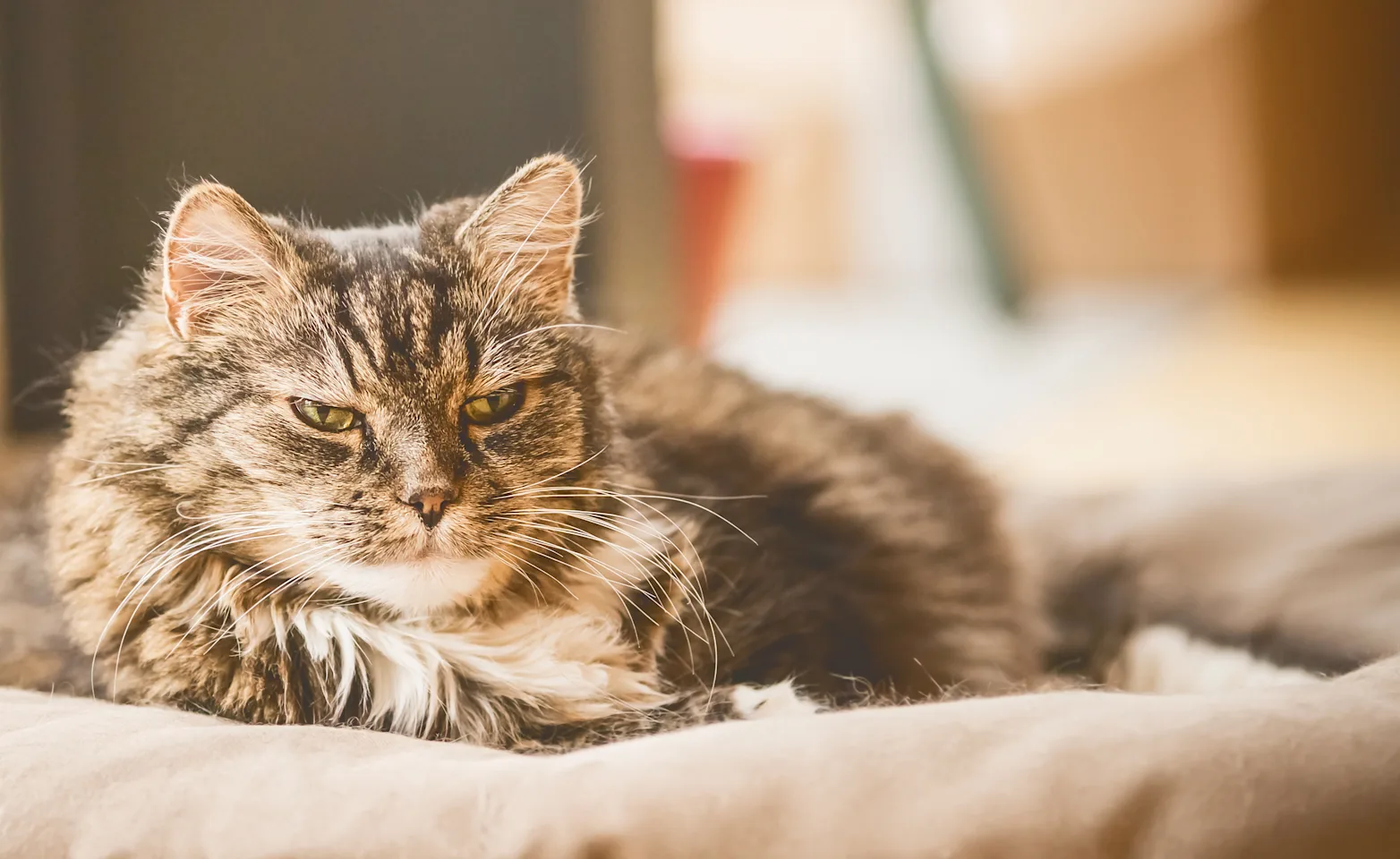Blue Cross Animal Hospital

Cats and Aging
As with all of us, your cat’s body takes some wear and tear over the years. He or she becomes more subject to age related complaints, and has different health requirements. A number of health issues such as dental disease, arthritis, diabetes, heart disease and kidney disease may start sneaking up as your cat’s age increases.
When detected early, many of these conditions can be successfully managed to make your cat more content and comfortable. If your senior cat is experiencing one or more of the signs on this checklist, be sure to bring it to our attention today. Use this checklist as a reminder in your cat’s appointment, and to monitor your cat between appointments.
| How old is my cat in human years? |
| AGE | Weight |
| 0-20Ibs/0-9kg | |
| 1 | 7 |
| 2 | 13 |
| 3 | 20 |
| 4 | 26 |
| 5 | 33 |
| 6 | 40 |
| 7 | 44 |
| 8 | 48 |
| 9 | 52 |
| 10 | 56 |
| 11 | 60 |
| 12 | 64 |
| 13 | 68 |
| 14 | 72 |
| 15 | 76 |
| 16 | 80 |
| 17 | 84 |
| 18 | 88 |
| 19 | 92 |
| 20 | 96 |
| 21 | 100 |
| 22 | 104 |
| 23 | 108 |
| 24 | 112 |
| 25 | 116 |
| Color Key | |
| Adult | |
| Senior | |
| Geriatric |
| AGE | Weight |
| 0-20Ibs/0-9kg | |
| 1 | 7 |
| 2 | 13 |
| 3 | 20 |
| 4 | 26 |
| 5 | 33 |
| 6 | 40 |
| 7 | 44 |
| 8 | 48 |
| 9 | 52 |
| 10 | 56 |
| 11 | 60 |
| 12 | 64 |
| 13 | 68 |
| 14 | 72 |
| 15 | 76 |
| 16 | 80 |
| 17 | 84 |
| 18 | 88 |
| 19 | 92 |
| 20 | 96 |
| 21 | 100 |
| 22 | 104 |
| 23 | 108 |
| 24 | 112 |
| 25 | 116 |
| Color Key | |
| Adult | |
| Senior | |
| Geriatric |
Have you noticed any changes in your cat’s behaviour?
As cats age, they can develop signs of brain aging, referred to cognitive dysfunction. This group of questions can help identify early signs of this cognitive decline, so that it can be better managed.
Does your cat:
Seek less attention, or interact less with your family?
Follow you around constantly?
Seem confused or disoriented in the house or yard?
Yowl or meow for no apparent reason, especially at night?
Have changed sleeping patterns?
Seem anxious (panting, shivering, restlessness)?
Aimlessly wander, pace, or seem restless?
Seem to get “stuck” in corners or facing walls?
Urinate or defecate outside the litterbox?
Fail to recognize familiar people or other pets?
Have you noticed any physical changes in your cat?
The symptoms listed below can indicate the onset of a number of age-related illnesses.
Does your cat:
Cough or seem winded in the morning or after playing?
Sometimes seem to pant? o Tire more rapidly during play?
Have changed eating habits or appetite? o Have noticeable weight gain or loss?
Need the water bowl filled more often (drinking more)?
Need the litter changed more often (urinating more)?
Dribble urine when lying down?
Have diarrhea or stool with mucous or blood?
Have constipation or strain to defecate?
Vomit? (If yes, is there hair, food or bile?)
Have signs of stiffness or limping?
Seek alternate routes to high places rather than jump?
Have a lowered activity level?
Now seek new lower or more sheltered places to sleep?
Have signs of pain such as hissing when touched?
Seem more irritable?
Have excessive shedding?
Have changes in his or her coat (thinner, dull, brittle)?
Have new lumps or bumps on his or her skin?
Have changes in existing skin lumps or bumps?
Scratch, lick or chew excessively?
Have an odor to his or her skin?
Have bad breath, red or swollen gums, or drool?
Have difficulty chewing food or toys?
Have signs of vision loss (bumping into objects, fearful of moving forward)?
Have signs of hearing loss (not responding to calling, or loud noises)?
Ever have muscle tremors or episodes of shaking?
Ever display circling, head tilts or repetitive movements?

